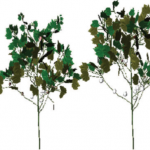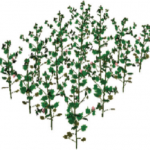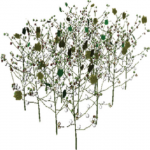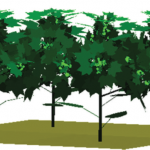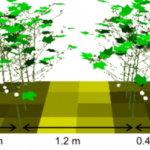CottonXL
Shenghao Gu, Lizhen Zhang, Zhenzhen Yan, Wopke van der Werf and Jochem B. Evers (China Agricultural University and Wageningen University)
Overview
| Model category | FSPM |
|---|---|
| Plant part | Shoot |
| Scale | Organs, Whole_plant, Field |
| Licence | open_source |
| Operating system | Any |
| Programming language | XL |
| Format of model inputs and outputs | gsz (zip) |
| Species studied | Cotton |
| Execution environment | GroIMP platform (Java VM required) |
| Modelling environment | GroIMP |
Scientific article
Modelling the structural response of cotton plants to mepiquat chloride and population densityShenghao Gu,Lizhen Zhang,Zhenzhen Yan,Wopke van der Werf and Jochem B. EversAnnals of Botany, 2014 View paper
Model description
CottonXL is a model designed to describe the architectural (stem, branches, leaves and fruits) development of cotton plants in relation to temperature, plant density, light interception and the use of the growth regulator mepiquat chloride (MC). This model was extended with functionality for radiation interception and modules for carbohydrate production, transport and consumption as well as organ biomass growth.
Some case studies
Some recent studies using CottonXL:
Gu S, Evers JB, Zhang L, et al (2014) Modelling the structural response of cotton plants to mepiquat chloride and population density. Annals of Botany 114:877–887.
https://doi.org/10.1093/aob/mct309
Gu S, Zhang L, Yan Z, et al (2018) Quantifying within-plant spatial heterogeneity in carbohydrate availability in cotton using a local-pool model. Annals of Botany 121:1005–1017. https://doi.org/10.1093/aob/mcx210
Mao L, Zhang L, Evers JB, et al (2016) Identification of plant configurations maximizing radiation capture in relay strip cotton using a functional–structural plant model. Field Crops Research 187:1–11. https://doi.org/10.1016/j.fcr.2015.12.005
Wang X, Zhang L, Evers JB, et al (2014) Predicting the effects of environment and management on cotton fibre growth and quality: a functional-structural plant modelling approach. AoB PLANTS 6:plu040–plu040. https://doi.org/10.1093/aobpla/plu040
